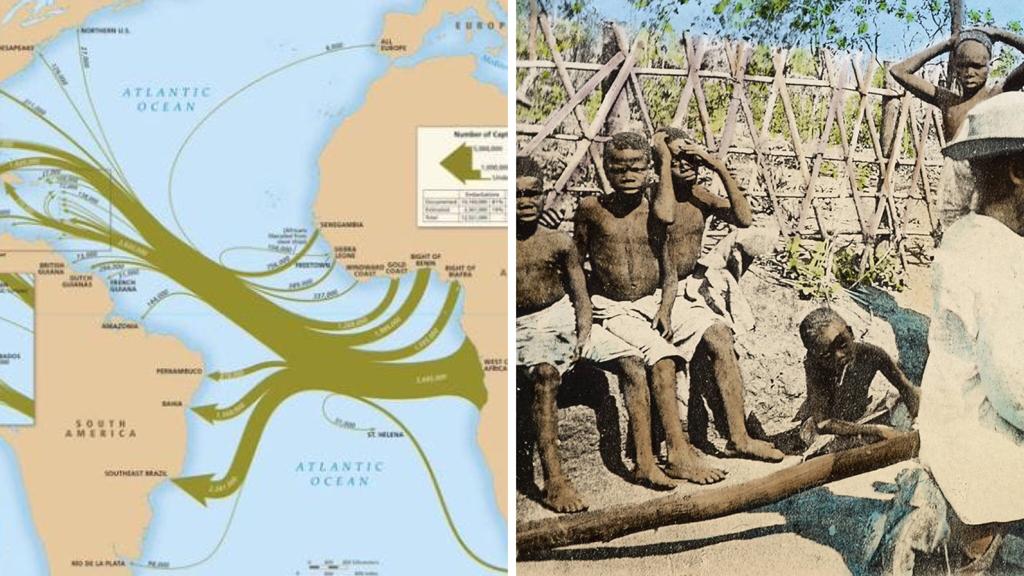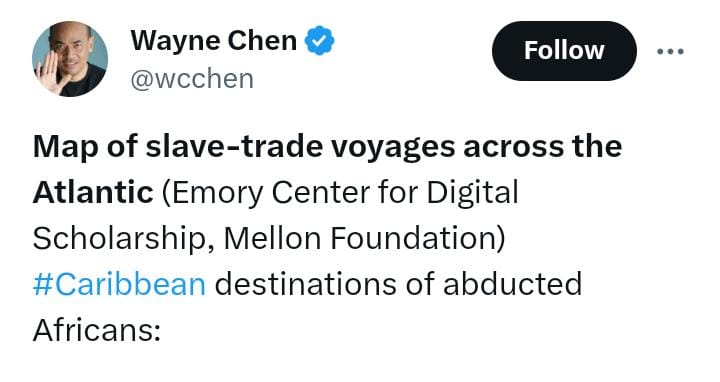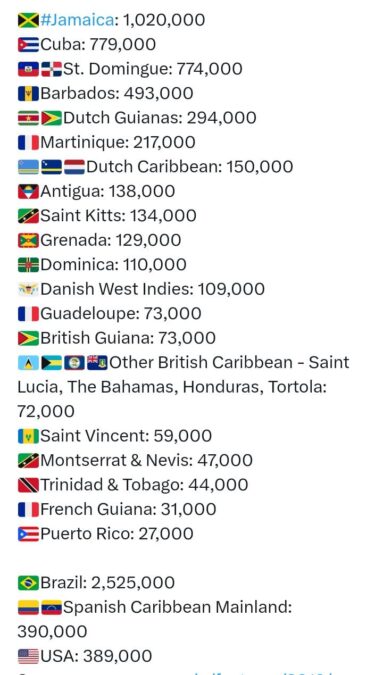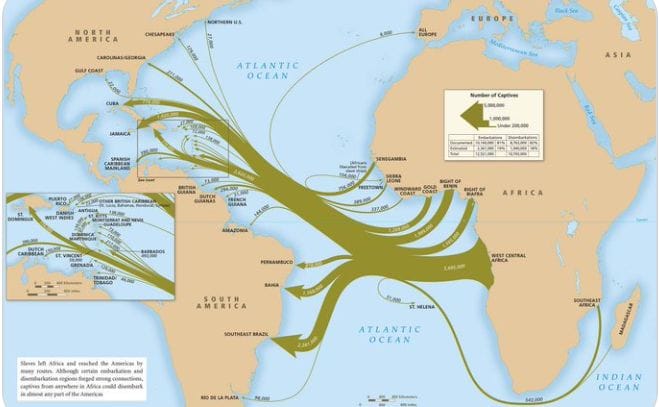Jamaica Leads Caribbean With The Largest Amount Of Captured Africans Transported To Its Shore
Tuesday, November 21, 2023, 1:33 PM GMT-5

The transatlantic slave trade was a horrific chapter in human history, where millions of Africans were forcibly abducted from their homes and transported across the Atlantic Ocean to various destinations. The impact of this brutal trade can still be felt today, especially in the Caribbean, which served as a major destination for these abducted Africans.
When we look at the map of slave trade voyages across the Atlantic courtesy of the Emory Center for Digital Scholarship, Mellon Foundation, we are confronted with the undeniable truth of this dark period.
[ads2]

The Caribbean islands, such as Jamaica, Haiti, Dominica Republic, Barbados, and Cuba, were key landing points for enslaved Africans based on the numbers of captured Africans transported to these countries. Jamaica, with over a million transported Africans, leads the Caribbean countries.

These islands were strategically located for the European powers involved in the slave trade, providing a convenient stopover before further transportation to other parts of the Americas.
The map reveals the complex network of routes used by slave ships, showcasing the interconnectedness of various regions involved in the trade. Ships departed from ports in Europe, primarily from countries like England, Spain, Portugal, and France, heading south to reach the African coast. From there, they ventured into the treacherous Middle Passage, enduring terrible conditions and high mortality rates among the African captives.

Upon reaching the Caribbean, the enslaved individuals would be auctioned off to plantation owners who sought to exploit their labour. This system of chattel slavery formed the backbone of the Caribbean economy, contributing to the immense wealth and prosperity of European colonizers while subjecting millions to unimaginable suffering.
[ads2]
The map also highlights the sheer scale of the slave trade, with numerous voyages crisscrossing the Atlantic over hundreds of years. It serves as a stark reminder of the widespread and systematic nature of this inhumane practice, which forever altered the demographic, cultural, and social fabric of the Caribbean.
Today, the legacy of the transatlantic slave trade is deeply ingrained in Caribbean society. The descendants of those abducted Africans have shaped the region’s diverse cultures and traditions, fighting for freedom, justice, and equality. The map of slave trade voyages across the Atlantic serves as a painful but necessary reminder of this shared history, encouraging us to never forget the atrocities committed and to strive for a world free from oppression and discrimination.
[ads2]
RELATED: Jamaica Ranked Last on List of Caribbean Countries That Consume Large Amounts of Alcohol
RELATED: Heat Dome Affecting Jamaica and Other Caribbean Countries – Watch Video
RELATED: Jamaica Branded “Silicon Island” of The Caribbean Amid Great Development in Tech Hub Race



